Eight incredible tales of wilderness survival.
Nothing is more terrifying than a wilderness survival situation. In one jolting moment, you are torn from safety and security and thrown into profound peril. You are alone, with little more than your wits and endurance keeping you alive. It’s the stuff of nightmares. And, of course, the stuff of movies and television. Think Tom Hanks in Cast Away. Or James Franco in 127 Hours. Or, if you’re a reality TV fan, Naked and Afraid. The theme of man- or woman-against-nature is as old as literature.
Older, in fact…hear me out.
I believe it’s a part of our basic biology. Think about it: We all are descended from at least one individual who found himself or herself alone in the wild, possibly left for dead, and then somehow beat the odds and made it back to safety. That little speck of DNA that survived along with that person has been passed down through a dozen or a hundred or a thousand generations—to me, to you, to all of us. Which is why our curiosity is triggered and our adrenaline begins to surge when we see or hear or read about someone who defies the odds and stumbles out of an impenetrable jungle or washes up on a distant shore.
One of the most enduring survival stories in the annals of popular fiction is Robinson Crusoe, the tale of a shipwrecked traveler who spends 28 years on a relentlessly hostile island somewhere in the Caribbean. The book was first published in 1719 and was an immediate sensation. Many readers believed it to be a real-life account and wondered how they might fare in similar circumstances. This was a new genre, “realistic fiction,” and author Daniel DeFoe had clearly tapped into that primal wiring all humans share. Although the plot details of Robinson Crusoe leaped from the fertile imagination of DeFoe, the inspiration for the title character almost certainly came from the incredible tale of Alexander Selkirk, our first of eight remarkable survival stories.
ALONE ON AN ISLAND
Selkirk was a 20-something Scottish privateer during the War of Spanish Succession, a conflict that embroiled all of Western Europe and its colonies in the early 1700s and helped England become a world economic power. Selkirk’s impulse control left much to be desired. He actually had chosen a life at sea over showing up in court to face charges of “indecent conduct in church.” In 1704, he was serving aboard the Cinque Ports in the Pacific, fighting French ships and plundering Spanish mining settlements in South America. When his captain, Thomas Stradling, overloaded the leaky ship on a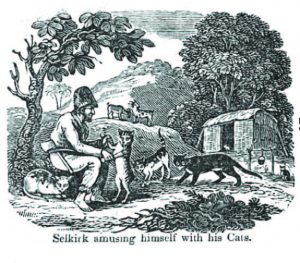 resupply stop in Mas a Terra, an uninhabited island off the coast of Chile, Selkirk insisted he would not sail unless much-needed repairs were made. Captain Stradling took the unruly Selkirk at his word and abandoned him on the island with a musket, hatchet, knife, cooking pot and Bible. The Cinque Ports sailed away…and soon sank.
resupply stop in Mas a Terra, an uninhabited island off the coast of Chile, Selkirk insisted he would not sail unless much-needed repairs were made. Captain Stradling took the unruly Selkirk at his word and abandoned him on the island with a musket, hatchet, knife, cooking pot and Bible. The Cinque Ports sailed away…and soon sank.
Selkirk set up camp on the beach, living off lobsters and waiting for another ship to sail by. His first of many rude awakenings came during mating season for thousands of sea lions, which chased him off the beach and into the island’s interior. There he lived off wild turnips and cabbage, as well as feral goats, when he could catch them. Unfortunately, Selkirk found himself plagued by rats, which attacked him every night after the sun went down. He solved this problem by using goat milk and meat to domesticate wild cats that lived on the island. They kept the rodent population at bay. Two ships did show up, but both were Spanish. One spotted him and sent ashore a landing party to capture him. Had they been successful, Selkirk would likely have been executed.
Four years and four months after being marooned, Selkirk was finally rescued by an English privateer and went back to his plundering ways like a man making up for lost time. Still an impetuous risk-taker, he was given command of his own ship and enjoyed several successful forays into Spanish territories. He made enough to retire comfortably in London, and his story made him something of a celebrity there, but soon Selkirk grew restless and he joined the Royal Navy, probably to avoid the long arm of the law or some other offended party. He lived an eventful life and was buried at sea after contracting yellow fever at the age of 45.
BEAR NECESSITIES
Another familiar story inspired by a real-life tale of survival is The Revenant, the 2015 film starring Leonardo DiCaprio. A “revenant” is someone who has been revived from death. Leo plays Hugh Glass, a frontiersman who, while serving on a westward expedition in 1823, was badly mauled by a grizzly bear in current-day South Dakota. He managed to kill the bear before losing consciousness, but suffered  what appeared to be mortal wounds. After dragging the unresponsive Glass on a litter two days, the expedition’s leader decided he was slowing down their progress and assigned two members of the party to stay with him until he died. While the two men waited for the inevitable, they dug a shallow grave. When the inevitable didn’t come quickly enough, they stripped Glass of his valuables and placed him in the hole they had dug. When the men caught up with the expedition they dutifully reported the sad news of their companion’s demise.
what appeared to be mortal wounds. After dragging the unresponsive Glass on a litter two days, the expedition’s leader decided he was slowing down their progress and assigned two members of the party to stay with him until he died. While the two men waited for the inevitable, they dug a shallow grave. When the inevitable didn’t come quickly enough, they stripped Glass of his valuables and placed him in the hole they had dug. When the men caught up with the expedition they dutifully reported the sad news of their companion’s demise.

You probably know the story. Glass awoke sometime later to find himself alone and under the skin of the bear that had attacked him—with a broken leg and deep, festering wounds. He set his own leg and allowed maggots to feast on his dying flesh in order to prevent gangrene. He survived on berries and roots. Glass dragged himself to the Cheyenne River, made a crude raft, and floated down to Fort Kiowa—a six-week journey covering 200 miles. After recovering from his injuries, Glass set out to exact murderous revenge on the two men who left him for dead.
Glass caught up with one of them, a teenager named Bridges, where the Bighorn River empties into the Yellowstone River. Seeing how young Bridges was, he decided to spare him. He found the second man, named Fitzgerald, in Nebraska. Fitzgerald had joined the army and was stationed at Fort Atkinson. Knowing he would be executed if he killed a U.S. soldier, Glass spared Fitzgerald, too, but warned him that he had better make the military a lifelong commitment—because the day he left the army he would end him. Glass never got the chance. He returned to frontier life and was killed during a skirmish with an Arikira war party. If you haven’t seen The Revenant, don’t worry about spoilers here; the movie is what they called a “fictionalized” version of the true story.
SNOWBOUND
Jan Baalsrud’s story sounds like it must be fiction. A Norwegian commando fighting for the resistance against Nazi occupiers during World War II, Balsruud and 11 compatriots set out to destroy an airfield control tower in the winter of 1943. Their mission was compromised when they mistook a local shopkeeper for their resistance contact (both men had the same name) and the shopkeeper—fearing he was being tested by the Germans—turned them in. The next morning, Baalsrud’s boat, which was loaded with 100 kilos of explosives, was sunk and everyone except Baalsrud was either killed or captured.
Baalsrud, soaking wet and missing one boot, hid in a snow gully, where he disarmed and shot a Gestapo officer with his own luger. From there, the Norwegian evaded capture for two months, surviving in frigid conditions with occasional assistance from locals. Suffering from snow blindness and frostbite, Baalsrud amputated his toes with a pocketknife to avoid gangrene.
Baalsrud hid from German patrols behind a snow wall for weeks and then was transported by stretcher to the Finnish border. Now near death, he was taken by a group of native Samis by reindeer to neutral Sweden. After months of recovery, Baalsrud made his way to Scotland, where he trained fellow Norwegian commandos. Eventually, he returned to Norway, where he worked as a secret agent until the end of the war. Baalsrud lived to the age of 71. At his request, his ashes were buried in the same grave with one of the partisans who had aided him during his escape from the Nazis in 1943, and paid the ultimate price.

SOUNDS BANANAS
Staying alive in the wild often depends on one’s ability to take advantage of the local animals. Marina Chapman’s spin on this rule of wilderness survival is a jaw-dropper. Around 1960, she was abducted as a toddler and then left for dead deep in the Colombian rainforest when her kidnappers, possibly realizing that her family would be unable to afford a ransom payment, dumped her and drove away. She walked for days, hoping to find a village and crying for help that never came. What she found was a troop of capuchin monkeys, who eventually adopted her. She knew she had been accepted into the group when the monkeys urinated on her leg and, later, when they groomed her and allowed her to groom them. For as long as five years—Marina has no way to say for sure—she lived with the capuchins. During that time, she managed to decipher how they communicated and was able to produce a vocabulary of whistles, coos, chirps and high-pitched screams. She said all they (and she) thought about was what they would eat each day.
By the time Marina was “rescued” by a pair of hunters, she had forgotten how to speak. They sold her to a brothel, where she did housework but managed to escape before being forced into prostitution. She used her “monkey skills” to survive as a street urchin in the town of Cucata before being taken in by a family in Bogota around the age of 14. She decided to name herself Marina after a Colombian beauty queen and eventually went to England as the family’s nanny. She married an Englishman and had a family of her own.

Marina taught her children how to climb trees and liked to tell them bedtime stories about hunting for food in the jungle. Sometimes she’d walk around the yard on all fours. And she could spot a snake from hundreds of feet away. The kids thought she was just being funny until they were old enough to hear the whole story—which Marina struggled to tell because her brain still functioned in a non-linear way. Finally, they encouraged her to write a book, The Girl with No Name. Several publishers turned it down, refusing to believe it could be true. To this day, many doubt Marina’s story. True or not, it’s quite a tale.
FALL GIRL
A jungle survival adventure of an altogether different kind began on Christmas Eve 1971, two miles in the air, when a Lockheed Electra passenger plane was struck by lightning and broke apart, spilling its passenger into the angry sky. Seventeen-year-old Juliane Koepcke, the daughter of German parents working in Peru, was still strapped in her seat when it detached from the fuselage. Her mother, who was sitting beside her, disappeared as the entire row of seats plummeted to the earth.
Koepcke regained consciousness and soon realized she was the only crash survivor. Experts theorize that the row of seats acted as a parachute, perhaps catching an updraft and, in addition, that the jungle canopy must have broken her fall. Even so, she suffered a broken collarbone, deep gashes in an arm and leg, and facial trauma. Koepcke pocketed some candy she found at the crash site and then activated the wilderness skills she learned while growing up in the Peruvian jungle with her father, a biologist, and her mother, an ornithologist. Koepcke found a river and waded downstream in knee-deep water for 10 days before discovering a small boat. She poured gasoline over her wounds to sterilize them and then fell asleep in the vessel. She was discovered the following morning by a group of fishermen, who transported her to the nearest village. Koepcke was reunited with her father, who was stunned to see her alive. She then led the recovery team to the crash site.
Koepcke pocketed some candy she found at the crash site and then activated the wilderness skills she learned while growing up in the Peruvian jungle with her father, a biologist, and her mother, an ornithologist. Koepcke found a river and waded downstream in knee-deep water for 10 days before discovering a small boat. She poured gasoline over her wounds to sterilize them and then fell asleep in the vessel. She was discovered the following morning by a group of fishermen, who transported her to the nearest village. Koepcke was reunited with her father, who was stunned to see her alive. She then led the recovery team to the crash site.
Running on Empty
Have you ever asked your iPhone “Where am I?” If it’s a geography question (as opposed to a career or relationship question) you’ll get an accurate answer that even includes a map. Thanks to GPS and online tools like Waze, getting lost is no longer the terror-inducing situation it was just a generation ago. Mauro Prosperi might be reluctant to admit it, but he really could have used one of those apps. He was competing in the 1994 Marathon of the Sands, a multi-day endurance race across Morocco’s slice of the Sahara Desert when a sandstorm separated him from the pack and left him alone and disoriented. Prosperi thought he was catching up, but he was actually running into neighboring Algeria.
an accurate answer that even includes a map. Thanks to GPS and online tools like Waze, getting lost is no longer the terror-inducing situation it was just a generation ago. Mauro Prosperi might be reluctant to admit it, but he really could have used one of those apps. He was competing in the 1994 Marathon of the Sands, a multi-day endurance race across Morocco’s slice of the Sahara Desert when a sandstorm separated him from the pack and left him alone and disoriented. Prosperi thought he was catching up, but he was actually running into neighboring Algeria.
Out of water and realizing the magnitude of his error, Prosperi grew despondent and attempted to slit his wrists. However, he was so dehydrated that the blood clotted almost instantly. Then he recalled a bit of advice a Berber nomad had offered before the race: When in doubt, walk in the direction of the morning clouds. And so, he set off again. Eating lizards, bugs and cacti, Prosperi made it to a desert oasis and was rescued, 40 pounds lighter than when he had started nine days earlier. He had run, walked and crawled 300 kilometers in the wrong direction.
In 1998, Werner Herzog made the film Wings of Hope, based on Koepcke’s remarkable story. It was a very personal project for the famed director. In 1971, he had been scouting locations in South America and was booked on Koepcke’s ill-fated flight…but missed it due to a last-minute change in his schedule.
WHALE OF A TALE
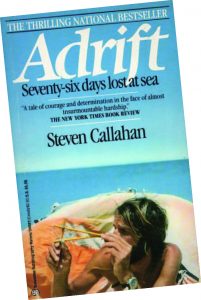 Just because you can build a boat, it doesn’t mean you should be sailing it by yourself. Steve Callahan, a naval architect and avid sailor, designed and constructed the Napoleon Solo and sailed it across the Atlantic to England in 1981. So far so good. From the port of Penzance, at the extreme southwest tip of England, he joined a single-handed sailing race to Antigua in January 1982. Foul weather off the coast of Spain swamped many of the entries, including the Napoleon Solo, but Callahan made repairs and, though he was now out of the running, decided to complete the journey anyway. One week later, the vessel’s hull was punctured during a night storm in a collision with a whale. Callahan had time to collect a few items, including the book Sea Survival, by Dougal Robertson. He climbed into a six-person life raft and watched his foundering ship drift away.
Just because you can build a boat, it doesn’t mean you should be sailing it by yourself. Steve Callahan, a naval architect and avid sailor, designed and constructed the Napoleon Solo and sailed it across the Atlantic to England in 1981. So far so good. From the port of Penzance, at the extreme southwest tip of England, he joined a single-handed sailing race to Antigua in January 1982. Foul weather off the coast of Spain swamped many of the entries, including the Napoleon Solo, but Callahan made repairs and, though he was now out of the running, decided to complete the journey anyway. One week later, the vessel’s hull was punctured during a night storm in a collision with a whale. Callahan had time to collect a few items, including the book Sea Survival, by Dougal Robertson. He climbed into a six-person life raft and watched his foundering ship drift away.
Callahan’s first move was to activate the raft’s E-PIRB (Electronic Position Indicating Radio Beacon). In 2021, this would lead to a quick rescue. But in 1982, satellites did not monitor E-PIRB signals, and the raft was in the “fat” part of the Atlantic that commercial airliners did not use, so no one else was close enough to detect the E-PIRB. As days turned into weeks, Callahan put Robertson’s words into action. He noticed that a kind of ecosystem developed around his raft and was able to spear or hook a variety of fish. He also created a sun still and other improvised devices that produced a pint of water a day. Callahan fended off sharks, repaired punctures, lost a third of his bodyweight and endured painful saltwater sores for 76 days before drifting to the coast of Guadeloupe.
the raft was in the “fat” part of the Atlantic that commercial airliners did not use, so no one else was close enough to detect the E-PIRB. As days turned into weeks, Callahan put Robertson’s words into action. He noticed that a kind of ecosystem developed around his raft and was able to spear or hook a variety of fish. He also created a sun still and other improvised devices that produced a pint of water a day. Callahan fended off sharks, repaired punctures, lost a third of his bodyweight and endured painful saltwater sores for 76 days before drifting to the coast of Guadeloupe.
After his ordeal, Callahan became a regular contributor to sailing magazines and also designed a lifeboat based on his survival experience. Callahan also wrote the novels Adrift and Capsized. During the making of the 2012 film Life of Pi, director Ang Lee hired Callahan as a consultant to make life aboard a drifting lifeboat more realistic. Callahan fashioned the various fishing lures and other tools that were used by Suraj Sharma throughout the movie.
A FISHY STORY
Callahan called the open ocean the world’s great wilderness. He gets no argument from Jose Alvarenga. An experienced Pacific fisherman, he set out from Costa Azul in Mexico on November 17, 2012 in a 23-foot fiberglass skiff with a big icebox and single outboard motor. His usual fishing partner was unavailable, so he took on a young, inexperienced assistant named Ezequiel Cordoba, whom he had never met before. The two men brought in 1,000 pounds of fish the first day, but a sudden storm prevented them from returning to port. For five straight days, the storm blew them ever deeper into the ocean, destroying the boat’s motor and electronics, and causing them to lose all of their fishing equipment. They had to dump their heavy catch when the vessel became impossible to maneuver.
Fortunately, Alvarenga had managed to transmit a distress signal to the boat’s owner before going radio silent. Unfortunately, the ensuing search effort turned up nothing and was called off after two days. Alvarenga and Cordoba survived by catching fish and seabirds with their hands. After four months with no sign of rescue, apparently Cordoba gave up. He refused to eat and, after securing a promise from Alvarenga not to eat him, he slipped away and Alvarenga dumped his body over the side. Over the next nine-plus months, Alvarenga spotted several container ships in the distance but was unable to attract their attention. On January 30, 2014, he saw a speck of land on the horizon—it was a remote corner of the Marshall Islands, more than 5,500 miles from where he had started. When Alvarenga drifted close enough, he leaped out of the boat and swam to shore. Two locals encountered him on the beach naked and waving a knife, barely able to stand and screaming in Spanish.
At first, no one believed Alvarenga’s story. It seemed implausible that he could have survived 14 months on the open sea; no one had ever survived more than a year under those conditions. Scurvy should have killed him, or so the thinking went. However, the vitamin C he got from the birds and turtles he ate probably saved him. Various ocean scientists studied Alvarenga’s claims and looked at the meandering mid-Pacific currents. They not only determined that such a trip was plausible, but that he was fortunate to have made it as quickly as he did. Alvarenga later passed a polygraph test, ending any lingering doubts. You may recall seeing Alvarenga on television. For a few news cycles back in those innocent days of 2014, he was the lead story. Later, Alvarenga gave a series of interviews to investigative journalist Jonathan Franklin, who published 438 Days: An Extraordinary True Story of Survival at Sea. Finally, and perhaps predictably, Ezekiel Cordoba’s family then sued him for cannibalism.
There are really important lessons to be learned from each of these remarkable tales of survival. If you’d like to know what they are, ask someone else. Or pick up a copy of Field & Stream or Soldier of Fortune. Not being an outdoorsman myself, I have no idea what they are—with the obvious exception of “If you’re thinking about doing something risky beyond the reach of civilization…don’t.”
Did You Know??
Survival stories generate important information about how humans do without food and water. An individual in good health can last a week without food and water before vital organs completely shut down, assuming physical activity is kept to a minimum. Without food, the body needs about 1.5 liters of water (plus a teaspoon of salt) a day to maintain fluid levels. Unfortunately, we know this from hunger strikes.
My stronger, more adventurous camping cousin, who had to get himself to a hospital following a surprisingly serious fly-fishing injury, would no doubt correct me. He’d say, “Aw, go ahead and do it…just do it with someone else.”
That’s fine, I guess, as long as that someone else isn’t me.
 Experimental Drug Looks Good vs. MRSA
Experimental Drug Looks Good vs. MRSA
 A Blunt Assessment of Marijuana
A Blunt Assessment of Marijuana
 Obesity and the Brain
Obesity and the Brain



 BEAT GENERATION
BEAT GENERATION VISION QUEST
VISION QUEST FINANCIAL AIDE
FINANCIAL AIDE LIGHTEN UP
LIGHTEN UP GET SMART
GET SMART INTO THE WOOD
INTO THE WOOD ON THE BALL
ON THE BALL WARMING TREND
WARMING TREND LOBE STORY
LOBE STORY BACK TO THE FUTURE
BACK TO THE FUTURE SWEET DREAMS
SWEET DREAMS LEG CANDY
LEG CANDY GYM DANDY
GYM DANDY THERE’S THE RUB
THERE’S THE RUB  PAIN MANAGEMENT
PAIN MANAGEMENT UP IN THE AIR
UP IN THE AIR TOE HOLD
TOE HOLD
 Avid4Adventure in Boulder, CO teaches hiking, biking, climbing and paddling—building skills, grit and determination. “Kids from all over the country come for our outdoor adventures,” says Ileana Street. “Stand-up paddle boarding, rock climbing, and mountain biking are just some of our activity offerings. We make sports inviting not intimidating. It’s empowering to master a new skill and it’s a confidence-booster.” Campers stay in comfortable (but not cushy) cabins, and meal-wise, Avid4Adventure accommodates any kind of diet. Programs change every year so that repeat guests are introduced to new challenges.
Avid4Adventure in Boulder, CO teaches hiking, biking, climbing and paddling—building skills, grit and determination. “Kids from all over the country come for our outdoor adventures,” says Ileana Street. “Stand-up paddle boarding, rock climbing, and mountain biking are just some of our activity offerings. We make sports inviting not intimidating. It’s empowering to master a new skill and it’s a confidence-booster.” Campers stay in comfortable (but not cushy) cabins, and meal-wise, Avid4Adventure accommodates any kind of diet. Programs change every year so that repeat guests are introduced to new challenges. Bold Earth in Golden, CO, offers teenagers an adventure-travel summer camp filled with exploration, learning and discovery. The camp focuses on small groups and promotes leadership, teamwork and excellence in a supportive environment. “We introduce kids, in a very successful way, how to be in the game instead of simply playing the game,” says Abbott Wallis. “There are no locked doors, no HBO, and it’s all super-honest. We teach kids how to connect with others. We turn the entertainment on while turning the computers off. In bringing out laughter, dancing, and singing, we make sure that when kids return home they have a big story to tell—It was incredible…I was incredible.” Since 1976, over 15,000 students from 50 states (and more than 55 countries) have attended Bold Earth. Parents and teens are actually interviewed before being accepted.
Bold Earth in Golden, CO, offers teenagers an adventure-travel summer camp filled with exploration, learning and discovery. The camp focuses on small groups and promotes leadership, teamwork and excellence in a supportive environment. “We introduce kids, in a very successful way, how to be in the game instead of simply playing the game,” says Abbott Wallis. “There are no locked doors, no HBO, and it’s all super-honest. We teach kids how to connect with others. We turn the entertainment on while turning the computers off. In bringing out laughter, dancing, and singing, we make sure that when kids return home they have a big story to tell—It was incredible…I was incredible.” Since 1976, over 15,000 students from 50 states (and more than 55 countries) have attended Bold Earth. Parents and teens are actually interviewed before being accepted. Hi-Hills Day Camp at Gill St. Bernard’s in Gladstone, NJ offers a variety of programs for children ages 3 to 15 across 10 summer weeks. Whether a family’s goal is enrichment, academics, sports, fine arts or traditional camp programs, Hi-Hill has become quite good at offering something for everyone. Traditional camp activities include instructional tennis, yoga, archery, pottery, nature, technology, swimming, and dance. Teen travel programs (for ages 13 to 15) offer a mix of day camp activities and travels to nearby attractions, plus one five-day overnight trip. Enrichment programs includes academics, athletics, creative and performing arts—all which can be combined with any of Hi-Hills day camps. “What makes Hi-Hills unique,” says Allyson Day, “is that we are one of the most flexible camps. We recognize that summer is just as busy, if not busier, than a hectic school year. With that in mind, children can attend one or more of our programs for a half-day, half-week or whatever fits into their schedule.”
Hi-Hills Day Camp at Gill St. Bernard’s in Gladstone, NJ offers a variety of programs for children ages 3 to 15 across 10 summer weeks. Whether a family’s goal is enrichment, academics, sports, fine arts or traditional camp programs, Hi-Hill has become quite good at offering something for everyone. Traditional camp activities include instructional tennis, yoga, archery, pottery, nature, technology, swimming, and dance. Teen travel programs (for ages 13 to 15) offer a mix of day camp activities and travels to nearby attractions, plus one five-day overnight trip. Enrichment programs includes academics, athletics, creative and performing arts—all which can be combined with any of Hi-Hills day camps. “What makes Hi-Hills unique,” says Allyson Day, “is that we are one of the most flexible camps. We recognize that summer is just as busy, if not busier, than a hectic school year. With that in mind, children can attend one or more of our programs for a half-day, half-week or whatever fits into their schedule.” Otter Bar Lodge Kayak School on the Salmon River in Northern California is a premier kayak school. Its location may be remote, but the atmosphere is intimate and friendly. “Our concept is simple: keep it small, personable and first-class,” says Peter Sturges. “While we specialize in river kayaking, we also offer a number of other outdoor activities. Some kids come as kayak newbies, while others are experienced. Many come back year after year.” There is no Internet service for the kids, adds Sturges’s wife, Kristy, and they aren’t allowed to bring any electronics. “We keep them busy from dawn to dusk, so they don’t miss their smartphones or video games,” she says. “We have found over our thirty years in operation that given the choice, kids would rather be outdoors, learning or perfecting a new sport than typing away on electronics.” She adds the kids actually enjoy the remoteness, church-like silence and absence of tech distractions.
Otter Bar Lodge Kayak School on the Salmon River in Northern California is a premier kayak school. Its location may be remote, but the atmosphere is intimate and friendly. “Our concept is simple: keep it small, personable and first-class,” says Peter Sturges. “While we specialize in river kayaking, we also offer a number of other outdoor activities. Some kids come as kayak newbies, while others are experienced. Many come back year after year.” There is no Internet service for the kids, adds Sturges’s wife, Kristy, and they aren’t allowed to bring any electronics. “We keep them busy from dawn to dusk, so they don’t miss their smartphones or video games,” she says. “We have found over our thirty years in operation that given the choice, kids would rather be outdoors, learning or perfecting a new sport than typing away on electronics.” She adds the kids actually enjoy the remoteness, church-like silence and absence of tech distractions. EXPLORE MORE
EXPLORE MORE
 Wild Whatcom in Bellingham, WA immerses boys and girls in exploration of the Northwest’s vast forests, wild rivers, mountainous meadows, tumbling waterfalls and pebbled beaches. “We aim to help kids discover their capabilities through suitable challenges, to better understand themselves and others,” says Laurel Peak. Wild Whatcom campers hike the Cascade ridges, watch the sunset over the Pacific, sleep under a star-studded sky, and play games that promote meaningful connections and new discoveries.
Wild Whatcom in Bellingham, WA immerses boys and girls in exploration of the Northwest’s vast forests, wild rivers, mountainous meadows, tumbling waterfalls and pebbled beaches. “We aim to help kids discover their capabilities through suitable challenges, to better understand themselves and others,” says Laurel Peak. Wild Whatcom campers hike the Cascade ridges, watch the sunset over the Pacific, sleep under a star-studded sky, and play games that promote meaningful connections and new discoveries.














 stub
stub 1977 original press photo with Jimmy Carter
1977 original press photo with Jimmy Carter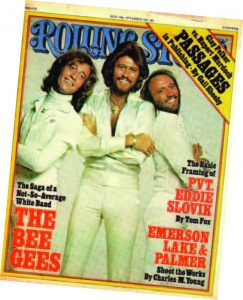


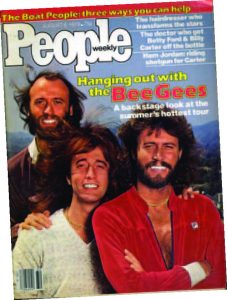 1979 People magazine
1979 People magazine
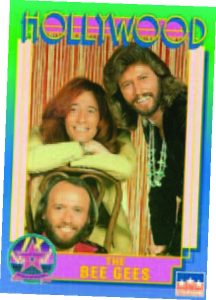 1991 Starline trading card
1991 Starline trading card


 1978 Sgt. Pepper’s souvenir
1978 Sgt. Pepper’s souvenir
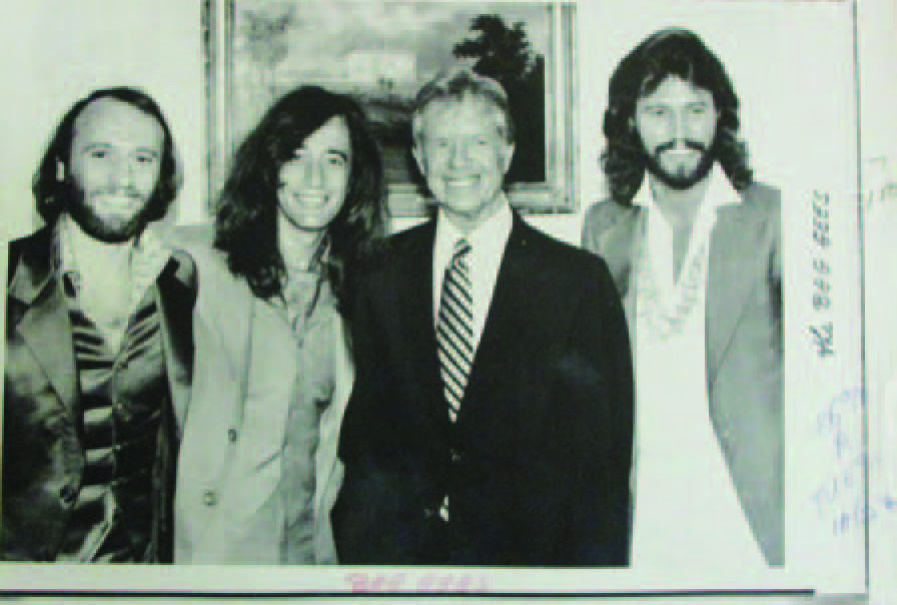
 Our savory Miso Glazed Salmon—accompanied with jasmine shrimp, fried rice and an aromatic citrus yuzu coconut sauce—is one of many sensational seasonal menu items. Order online!
Our savory Miso Glazed Salmon—accompanied with jasmine shrimp, fried rice and an aromatic citrus yuzu coconut sauce—is one of many sensational seasonal menu items. Order online! Our food specials amaze! I work tirelessly to bring you the best weekly meat, fish and pasta specials. Follow us on social media to get all of the most current updates!
Our food specials amaze! I work tirelessly to bring you the best weekly meat, fish and pasta specials. Follow us on social media to get all of the most current updates!  Check out our awesome desserts brought to you by our committed staff. The variety amazes as does the taste!
Check out our awesome desserts brought to you by our committed staff. The variety amazes as does the taste! Our refreshing Mango Guac is sure to bring the taste of the Southwest to Morristown.
Our refreshing Mango Guac is sure to bring the taste of the Southwest to Morristown. Tender pork belly, hoisin sauce and pickled cucumber served on a Chinese bun.
Tender pork belly, hoisin sauce and pickled cucumber served on a Chinese bun.  Join us for our “speedy affordable lunches” or dinner. We suggest you try our fresh, never frozen, 18 oz. bone-in Outlaw Ribeye—featuring juicy marbling that is perfectly seasoned and fire-grilled by our expert Grill Masters. Make sure to also try our amazing chicken and seafood dishes, as well.
Join us for our “speedy affordable lunches” or dinner. We suggest you try our fresh, never frozen, 18 oz. bone-in Outlaw Ribeye—featuring juicy marbling that is perfectly seasoned and fire-grilled by our expert Grill Masters. Make sure to also try our amazing chicken and seafood dishes, as well. Be it a sizzling filet in the steakhouse or our signature burger in the tavern upstairs, Ursino is sure to please the most selective palates. Our carefully composed menus feature fresh, seasonal ingredients and reflect the passion we put into each and every meal we serve.
Be it a sizzling filet in the steakhouse or our signature burger in the tavern upstairs, Ursino is sure to please the most selective palates. Our carefully composed menus feature fresh, seasonal ingredients and reflect the passion we put into each and every meal we serve.
 1963
1963 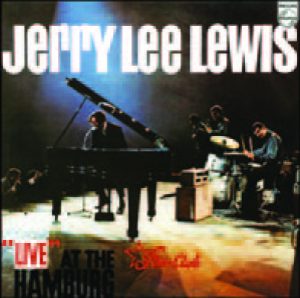 1964
1964 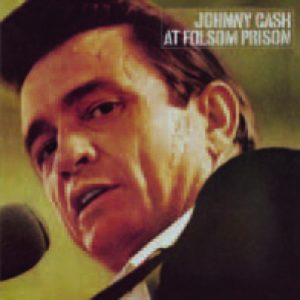 1968
1968  1969
1969  1970
1970  1970
1970  1971
1971  1971
1971 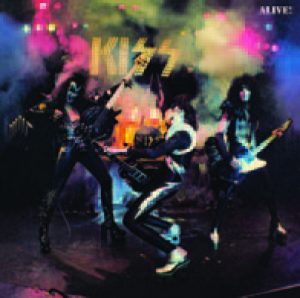 1975
1975  1975
1975  its top stars as quick-hit moneymakers. Cash proved to his fellow musicians and their labels that a live album could be its own sensational work of art and soon everyone was investing in concert recordings. The technology of the 1970s was crude by modern standards, but there was enough engineering talent to clean up the background noise without losing the crackling energy of performers playing to their Joel Baldwin/Look Magazine adoring fans. By the early 1980s, however, live albums had fallen out of favor. MTV triggered a brief revival with its Unplugged series, but we may never see (or hear) albums like the ones we plucked out of the record store racks all those years ago.
its top stars as quick-hit moneymakers. Cash proved to his fellow musicians and their labels that a live album could be its own sensational work of art and soon everyone was investing in concert recordings. The technology of the 1970s was crude by modern standards, but there was enough engineering talent to clean up the background noise without losing the crackling energy of performers playing to their Joel Baldwin/Look Magazine adoring fans. By the early 1980s, however, live albums had fallen out of favor. MTV triggered a brief revival with its Unplugged series, but we may never see (or hear) albums like the ones we plucked out of the record store racks all those years ago. 1975
1975  1976
1976  1976
1976  1976
1976 
 1978
1978  1978
1978  1984
1984  1985
1985  1986
1986  1986
1986  1992
1992  1994
1994  1961
1961  1963
1963  1994
1994  2001
2001  2016
2016  2018
2018 

 resupply stop in Mas a Terra, an uninhabited island off the coast of Chile, Selkirk insisted he would not sail unless much-needed repairs were made. Captain Stradling took the unruly Selkirk at his word and abandoned him on the island with a musket, hatchet, knife, cooking pot and Bible. The Cinque Ports sailed away…and soon sank.
resupply stop in Mas a Terra, an uninhabited island off the coast of Chile, Selkirk insisted he would not sail unless much-needed repairs were made. Captain Stradling took the unruly Selkirk at his word and abandoned him on the island with a musket, hatchet, knife, cooking pot and Bible. The Cinque Ports sailed away…and soon sank.  what appeared to be mortal wounds. After dragging the unresponsive Glass on a litter two days, the expedition’s leader decided he was slowing down their progress and assigned two members of the party to stay with him until he died. While the two men waited for the inevitable, they dug a shallow grave. When the inevitable didn’t come quickly enough, they stripped Glass of his valuables and placed him in the hole they had dug. When the men caught up with the expedition they dutifully reported the sad news of their companion’s demise.
what appeared to be mortal wounds. After dragging the unresponsive Glass on a litter two days, the expedition’s leader decided he was slowing down their progress and assigned two members of the party to stay with him until he died. While the two men waited for the inevitable, they dug a shallow grave. When the inevitable didn’t come quickly enough, they stripped Glass of his valuables and placed him in the hole they had dug. When the men caught up with the expedition they dutifully reported the sad news of their companion’s demise. 



 Koepcke pocketed some candy she found at the crash site and then activated the wilderness skills she learned while growing up in the Peruvian jungle with her father, a biologist, and her mother, an ornithologist. Koepcke found a river and waded downstream in knee-deep water for 10 days before discovering a small boat. She poured gasoline over her wounds to sterilize them and then fell asleep in the vessel. She was discovered the following morning by a group of fishermen, who transported her to the nearest village. Koepcke was reunited with her father, who was stunned to see her alive. She then led the recovery team to the crash site.
Koepcke pocketed some candy she found at the crash site and then activated the wilderness skills she learned while growing up in the Peruvian jungle with her father, a biologist, and her mother, an ornithologist. Koepcke found a river and waded downstream in knee-deep water for 10 days before discovering a small boat. She poured gasoline over her wounds to sterilize them and then fell asleep in the vessel. She was discovered the following morning by a group of fishermen, who transported her to the nearest village. Koepcke was reunited with her father, who was stunned to see her alive. She then led the recovery team to the crash site. an accurate answer that even includes a map. Thanks to GPS and online tools like Waze, getting lost is no longer the terror-inducing situation it was just a generation ago. Mauro Prosperi might be reluctant to admit it, but he really could have used one of those apps. He was competing in the 1994 Marathon of the Sands, a multi-day endurance race across Morocco’s slice of the Sahara Desert when a sandstorm separated him from the pack and left him alone and disoriented. Prosperi thought he was catching up, but he was actually running into neighboring Algeria.
an accurate answer that even includes a map. Thanks to GPS and online tools like Waze, getting lost is no longer the terror-inducing situation it was just a generation ago. Mauro Prosperi might be reluctant to admit it, but he really could have used one of those apps. He was competing in the 1994 Marathon of the Sands, a multi-day endurance race across Morocco’s slice of the Sahara Desert when a sandstorm separated him from the pack and left him alone and disoriented. Prosperi thought he was catching up, but he was actually running into neighboring Algeria. 
 Just because you can build a boat, it doesn’t mean you should be sailing it by yourself. Steve Callahan, a naval architect and avid sailor, designed and constructed the Napoleon Solo and sailed it across the Atlantic to England in 1981. So far so good. From the port of Penzance, at the extreme southwest tip of England, he joined a single-handed sailing race to Antigua in January 1982. Foul weather off the coast of Spain swamped many of the entries, including the Napoleon Solo, but Callahan made repairs and, though he was now out of the running, decided to complete the journey anyway. One week later, the vessel’s hull was punctured during a night storm in a collision with a whale. Callahan had time to collect a few items, including the book Sea Survival, by Dougal Robertson. He climbed into a six-person life raft and watched his foundering ship drift away.
Just because you can build a boat, it doesn’t mean you should be sailing it by yourself. Steve Callahan, a naval architect and avid sailor, designed and constructed the Napoleon Solo and sailed it across the Atlantic to England in 1981. So far so good. From the port of Penzance, at the extreme southwest tip of England, he joined a single-handed sailing race to Antigua in January 1982. Foul weather off the coast of Spain swamped many of the entries, including the Napoleon Solo, but Callahan made repairs and, though he was now out of the running, decided to complete the journey anyway. One week later, the vessel’s hull was punctured during a night storm in a collision with a whale. Callahan had time to collect a few items, including the book Sea Survival, by Dougal Robertson. He climbed into a six-person life raft and watched his foundering ship drift away.  the raft was in the “fat” part of the Atlantic that commercial airliners did not use, so no one else was close enough to detect the E-PIRB. As days turned into weeks, Callahan put Robertson’s words into action. He noticed that a kind of ecosystem developed around his raft and was able to spear or hook a variety of fish. He also created a sun still and other improvised devices that produced a pint of water a day. Callahan fended off sharks, repaired punctures, lost a third of his bodyweight and endured painful saltwater sores for 76 days before drifting to the coast of Guadeloupe.
the raft was in the “fat” part of the Atlantic that commercial airliners did not use, so no one else was close enough to detect the E-PIRB. As days turned into weeks, Callahan put Robertson’s words into action. He noticed that a kind of ecosystem developed around his raft and was able to spear or hook a variety of fish. He also created a sun still and other improvised devices that produced a pint of water a day. Callahan fended off sharks, repaired punctures, lost a third of his bodyweight and endured painful saltwater sores for 76 days before drifting to the coast of Guadeloupe. 


 Inlet Meltdown, 2006 Acrylics on board, 24” x 30” Private Collector
Inlet Meltdown, 2006 Acrylics on board, 24” x 30” Private Collector
 Nature’s Pride, 2011
Nature’s Pride, 2011 Back Bay Whimsy, 2013
Back Bay Whimsy, 2013 Storm Brewing on the Barnegat, 2017 Encaustic on metal, 11” x 14”
Storm Brewing on the Barnegat, 2017 Encaustic on metal, 11” x 14” Shore Energy, 2019
Shore Energy, 2019 All you need is an eye for fun and an ageless spirit to appreciate the work of internationally known artist Vincent Nardone of Brick Township, who describes himself as a Visionary Expressionist. His art reflects the rhythms and patterns of New Jersey back bays and coastlines. Says Nardone, “My creative process is a textural journey synthesized into bits and then abstracted into imagery using pastels, watercolor, mixed media, and acrylic impasto. I like to work on location with my palette knife, brushes, and ideas.” Many of his works seem to dance like sugarplum fairies along the waterways he often describes as “whimsy.” A South Orange native, Nardone recalls, “My mother wanted me to be a priest, but I wanted to be an artist and go out with girls.” He studied at the Newark School of Fine and Industrial Arts, Montclair State University, USC, and did annual post-graduate work in Paris and Florence. He taught in the South Orange-Maplewood school system for 30 years. He also won major awards, including Le Salon, Paris; Prix Rubens Medal; gold medals from the Audubon Artists, and other major awards from Allied Artists of America. All “sugarplums,” too.
All you need is an eye for fun and an ageless spirit to appreciate the work of internationally known artist Vincent Nardone of Brick Township, who describes himself as a Visionary Expressionist. His art reflects the rhythms and patterns of New Jersey back bays and coastlines. Says Nardone, “My creative process is a textural journey synthesized into bits and then abstracted into imagery using pastels, watercolor, mixed media, and acrylic impasto. I like to work on location with my palette knife, brushes, and ideas.” Many of his works seem to dance like sugarplum fairies along the waterways he often describes as “whimsy.” A South Orange native, Nardone recalls, “My mother wanted me to be a priest, but I wanted to be an artist and go out with girls.” He studied at the Newark School of Fine and Industrial Arts, Montclair State University, USC, and did annual post-graduate work in Paris and Florence. He taught in the South Orange-Maplewood school system for 30 years. He also won major awards, including Le Salon, Paris; Prix Rubens Medal; gold medals from the Audubon Artists, and other major awards from Allied Artists of America. All “sugarplums,” too.
 Part of the shifting treatment landscape for Behavioral Health stems from what Dr. Salvatore Savatta, Chair of Psychiatry at Trinitas, calls a “dramatic expansion” over the last 15 years in relevant research and the volume of information sources from which practitioners can draw:
Part of the shifting treatment landscape for Behavioral Health stems from what Dr. Salvatore Savatta, Chair of Psychiatry at Trinitas, calls a “dramatic expansion” over the last 15 years in relevant research and the volume of information sources from which practitioners can draw: Esketamine is a more potent and faster-acting form of ketamine, which is most often used as a surgical anesthetic and has been around for 50 years. Esketamine has an immediate effect on treatment-resistant depression and also appears to reduce suicide ideation. Delivering the drug in a nasal spray means it is absorbed by a different receptor than pills are—providing a much faster route to the brain, where it targets multiple brain connections at once.
Esketamine is a more potent and faster-acting form of ketamine, which is most often used as a surgical anesthetic and has been around for 50 years. Esketamine has an immediate effect on treatment-resistant depression and also appears to reduce suicide ideation. Delivering the drug in a nasal spray means it is absorbed by a different receptor than pills are—providing a much faster route to the brain, where it targets multiple brain connections at once.

 During her high school years at Union County Vo-Tech’s Allied Health School, Jones took part in a Medical Mentoring program and Nursing Camp at Trinitas, laying the foundation of skills and academics on which she built her professional plans. Her undergraduate studies at Drexel University—funded partly by a scholarship from Trinitas—propelled her ever forward and enhanced her passion for the business of healthcare.
During her high school years at Union County Vo-Tech’s Allied Health School, Jones took part in a Medical Mentoring program and Nursing Camp at Trinitas, laying the foundation of skills and academics on which she built her professional plans. Her undergraduate studies at Drexel University—funded partly by a scholarship from Trinitas—propelled her ever forward and enhanced her passion for the business of healthcare. 
 That experience planted another seed for Jasmine Jones: the possibility of one day putting her journalism skills to use by traveling the world, tracking her experiences in a memoir, and using her expertise to impact healthcare policy. At the moment, as one of Trinitas’s promising new Emergency Department RNs, she’ll remain close to home and family. Her own, as well as the Trinitas family…which she’s been a part of now going on ten years.
That experience planted another seed for Jasmine Jones: the possibility of one day putting her journalism skills to use by traveling the world, tracking her experiences in a memoir, and using her expertise to impact healthcare policy. At the moment, as one of Trinitas’s promising new Emergency Department RNs, she’ll remain close to home and family. Her own, as well as the Trinitas family…which she’s been a part of now going on ten years. 
 Administrative Director of the Emergency and Emergency Medical Services Departments, a good chunk of that critical window can be wasted by driving that individual to the hospital in a personal vehicle. Dialing 9-1-1 initiates a System of Care that makes the most of those precious minutes.
Administrative Director of the Emergency and Emergency Medical Services Departments, a good chunk of that critical window can be wasted by driving that individual to the hospital in a personal vehicle. Dialing 9-1-1 initiates a System of Care that makes the most of those precious minutes.
 at the very first moment that the EMTs make contact with the patient. Trinitas pre-hospital personnel is trained in procedures such as administering CPR, providing medication, inserting an IV, and transmitting an EKG to the hospital prior to the patient’s arrival. Once delivered to the Emergency Department, no time is wasted in turning over those in need of immediate cardiac care to the Cardiovascular Services Department.
at the very first moment that the EMTs make contact with the patient. Trinitas pre-hospital personnel is trained in procedures such as administering CPR, providing medication, inserting an IV, and transmitting an EKG to the hospital prior to the patient’s arrival. Once delivered to the Emergency Department, no time is wasted in turning over those in need of immediate cardiac care to the Cardiovascular Services Department.
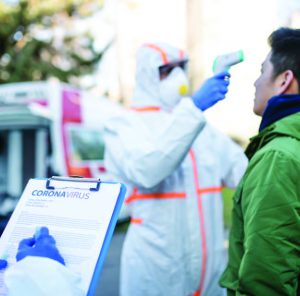 situations on a round-the-clock basis. In assembling that team, she looks for individuals who are “a bit of an adrenaline junkie,” adding that they need to stay calm under fire and also appreciate the ultimate rewards of being a critical caregiver. What is her reward?
situations on a round-the-clock basis. In assembling that team, she looks for individuals who are “a bit of an adrenaline junkie,” adding that they need to stay calm under fire and also appreciate the ultimate rewards of being a critical caregiver. What is her reward? —ST Elevation Myocardial Infarction, or STEMI—which blocks blood flow to the heart. These extreme cases are prime examples of the difference that a 9-1-1 call to Trinitas can make.
—ST Elevation Myocardial Infarction, or STEMI—which blocks blood flow to the heart. These extreme cases are prime examples of the difference that a 9-1-1 call to Trinitas can make.

 got it. I got an ache? Oh, I got it. My eye’s twitching? [laughs] It’s COVID! So then I had a friend tell me to download the Calm app and meditate, so I did that for a while. What really helped me was just that I didn’t watch the news anymore. Honestly, that helped me a lot. But in late November, I had knee replacement surgery. So I went back into stress mode. It’s been a real ride!
got it. I got an ache? Oh, I got it. My eye’s twitching? [laughs] It’s COVID! So then I had a friend tell me to download the Calm app and meditate, so I did that for a while. What really helped me was just that I didn’t watch the news anymore. Honestly, that helped me a lot. But in late November, I had knee replacement surgery. So I went back into stress mode. It’s been a real ride!
 EDGE: It doesn’t sound like you had a mentor or a role model when you launched your entertainment career.
EDGE: It doesn’t sound like you had a mentor or a role model when you launched your entertainment career.

 was getting a whole lot of regular gigs—I just got my first commercial voiceover during quarantine, and it was the most exciting thing ever, doing the Rocket Mortgage commercials. I’m like, Woo-hoo, that’s me! I literally pause it and watch it. I watched the commercials to hear my voice. It’s like, you’re on TV, you have a show that comes on weekly. But there’s something about the voiceover commercial that excites me.
was getting a whole lot of regular gigs—I just got my first commercial voiceover during quarantine, and it was the most exciting thing ever, doing the Rocket Mortgage commercials. I’m like, Woo-hoo, that’s me! I literally pause it and watch it. I watched the commercials to hear my voice. It’s like, you’re on TV, you have a show that comes on weekly. But there’s something about the voiceover commercial that excites me.

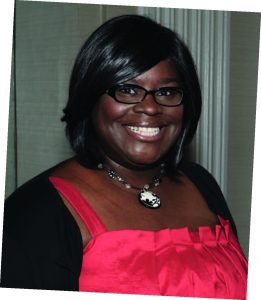


 Tom Corvo, owner of Shore Grow Hydro, a three-year-old hydro-ponics retail store in Ocean, says there are many consider-ations that determine what sort of home-growing unit to purchase: Do you have the space, time Shore Grow Hydro and budget? Generally the lights are the most expensive purchase. One customer spent $50,000 to set up two rooms with hydroponics. Or you could invest in a simpler set-up of a lettuce raft floating in a 2 x 4-foot tray on legs with a grow light for under $500. The store smartly offers support: the last Thursday in every month, Shore Grow runs classes—from Hydro 101 for seed starting and fruiting to more advanced 201 classes for propagation, pest control and the finer points of automation.
Tom Corvo, owner of Shore Grow Hydro, a three-year-old hydro-ponics retail store in Ocean, says there are many consider-ations that determine what sort of home-growing unit to purchase: Do you have the space, time Shore Grow Hydro and budget? Generally the lights are the most expensive purchase. One customer spent $50,000 to set up two rooms with hydroponics. Or you could invest in a simpler set-up of a lettuce raft floating in a 2 x 4-foot tray on legs with a grow light for under $500. The store smartly offers support: the last Thursday in every month, Shore Grow runs classes—from Hydro 101 for seed starting and fruiting to more advanced 201 classes for propagation, pest control and the finer points of automation. On the opposite coast, there’s California-based Hamama, a micro-green growing system that pops up on my Facebook feed every day. The ads of this e-commerce hydroponics company are appealing and tempting. What intrigues me is the promise of healthful microgreens that grow quickly, easily and don’t take up a lot of space or energy—as well as no need for a water pump or filter. (So technically is this hydroponic?) Better yet, the company’s “starter kit” doesn’t cost a lot of lettuce: $35 plus free shipping. Costs can mount if you go all-in and purchase a “grow shelf” that accommodates six grow trays. I spoke with Camille Richman at Hamama, who reports that orders have increased during the pandemic and that their top-seller is the Super Salad Mix Seed Quilt, a growing medium that contains broccoli, kale, arugula, kohlrabi, cabbage and cauliflower seeds. But the jury is out: Amazon customers either loved or hated the product—the seed strips worked for some and didn’t deliver salad for others.
On the opposite coast, there’s California-based Hamama, a micro-green growing system that pops up on my Facebook feed every day. The ads of this e-commerce hydroponics company are appealing and tempting. What intrigues me is the promise of healthful microgreens that grow quickly, easily and don’t take up a lot of space or energy—as well as no need for a water pump or filter. (So technically is this hydroponic?) Better yet, the company’s “starter kit” doesn’t cost a lot of lettuce: $35 plus free shipping. Costs can mount if you go all-in and purchase a “grow shelf” that accommodates six grow trays. I spoke with Camille Richman at Hamama, who reports that orders have increased during the pandemic and that their top-seller is the Super Salad Mix Seed Quilt, a growing medium that contains broccoli, kale, arugula, kohlrabi, cabbage and cauliflower seeds. But the jury is out: Amazon customers either loved or hated the product—the seed strips worked for some and didn’t deliver salad for others. By now, you may have surmised that I’m in favor of low-maintenance systems. I gravitate to easy-to-use and safe products. So I also gravitated to a hydroponics off-shoot called aeroponics. Aerofarms Aeroponics is a growing system that combines aeration and nutrient misting that encourages faster plant growth. Newark is home to Aerofarms, a “data-driven” indoor vertical growing farm and company that has been in the news the last few years. This New Jersey “home-grown” business enjoys several partnerships around the state, nationally and globally. The company, which claims its growing systems need 95% less water than outdoor farms, has been selling its lettuces, herbs and microgreens to restaurants ranging from Red Rooster to Momofuku, as well as retail grocery chains including Whole Foods under the brand Dream Greens. Aerofarms also professes to be 390 times more productive per square foot than traditional agriculture. Privately owned, the company enjoys financial partnerships with Goldman Sachs, IKEA and Dubai Holdings. Now Aerofarms is building the world’s largest aeroponic farm—90,000 square feet—in Abu Dhabi.
By now, you may have surmised that I’m in favor of low-maintenance systems. I gravitate to easy-to-use and safe products. So I also gravitated to a hydroponics off-shoot called aeroponics. Aerofarms Aeroponics is a growing system that combines aeration and nutrient misting that encourages faster plant growth. Newark is home to Aerofarms, a “data-driven” indoor vertical growing farm and company that has been in the news the last few years. This New Jersey “home-grown” business enjoys several partnerships around the state, nationally and globally. The company, which claims its growing systems need 95% less water than outdoor farms, has been selling its lettuces, herbs and microgreens to restaurants ranging from Red Rooster to Momofuku, as well as retail grocery chains including Whole Foods under the brand Dream Greens. Aerofarms also professes to be 390 times more productive per square foot than traditional agriculture. Privately owned, the company enjoys financial partnerships with Goldman Sachs, IKEA and Dubai Holdings. Now Aerofarms is building the world’s largest aeroponic farm—90,000 square feet—in Abu Dhabi.  says the vertical growing units—an outdoor one ($620) and an indoor version ($970) with LED grow-lights—are selling so well she can’t keep them in stock. While Tower Garden offers a seed starting kit for $29, a first farming foray might be better served with $2 plant seedlings. The indoor tower can house up to 16 microgreens and 16 full greens at one time. Campi says that the plants last up to three or four months and recommends harvesting lettuce from the outside. Her enterprising college-age son Joe has started a Tower Garden Cleaning and Set-up business to help her clients maintain their towers. As a multi-tasker with a half-dozen projects in the works, I don’t want to think about upkeep. So perhaps Joe’s $120 maintenance fee per season for one indoor model, though pricy, could be worth it.
says the vertical growing units—an outdoor one ($620) and an indoor version ($970) with LED grow-lights—are selling so well she can’t keep them in stock. While Tower Garden offers a seed starting kit for $29, a first farming foray might be better served with $2 plant seedlings. The indoor tower can house up to 16 microgreens and 16 full greens at one time. Campi says that the plants last up to three or four months and recommends harvesting lettuce from the outside. Her enterprising college-age son Joe has started a Tower Garden Cleaning and Set-up business to help her clients maintain their towers. As a multi-tasker with a half-dozen projects in the works, I don’t want to think about upkeep. So perhaps Joe’s $120 maintenance fee per season for one indoor model, though pricy, could be worth it. 


 1. Combine the onion and garlic in the slow cooker. Add the carrots, parsnips, turnip, potato, and rice. Stir in the tomatoes, broth, herbes de Provence, and salt and pepper to taste. Cover and cook on Low until the vegetables are tender, 6 to 8 hours.
1. Combine the onion and garlic in the slow cooker. Add the carrots, parsnips, turnip, potato, and rice. Stir in the tomatoes, broth, herbes de Provence, and salt and pepper to taste. Cover and cook on Low until the vegetables are tender, 6 to 8 hours. Holy Mole Red Bean Chili
Holy Mole Red Bean Chili

 Rustic Potpie Topped with Chive Biscuits
Rustic Potpie Topped with Chive Biscuits

 Coconut Rice Pudding
Coconut Rice Pudding



 His thumbprints are on projects ranging from a rambling rose garden in Bellingham, Washington and a rose garden and propagation program on the Frank Lloyd Wright-designed Southern Florida College campus, to a vast heritage rose collection in Chambersville, Texas and a children’s plant workshop a bit closer to home, in Harlem.
His thumbprints are on projects ranging from a rambling rose garden in Bellingham, Washington and a rose garden and propagation program on the Frank Lloyd Wright-designed Southern Florida College campus, to a vast heritage rose collection in Chambersville, Texas and a children’s plant workshop a bit closer to home, in Harlem. With the influx of genetically engineered roses, Scanniello’s approach to heritage roses is almost like a spiritual calling. “Rosarians have a responsibility to preserve species roses and their oldest known hybrids,” he explains. “Modern-day rose hybridizers are turning to these oldest roses for the key to creating healthy roses. Without the preservation of species and old roses, a valuable genetic link to disease resistance will be lost.”
With the influx of genetically engineered roses, Scanniello’s approach to heritage roses is almost like a spiritual calling. “Rosarians have a responsibility to preserve species roses and their oldest known hybrids,” he explains. “Modern-day rose hybridizers are turning to these oldest roses for the key to creating healthy roses. Without the preservation of species and old roses, a valuable genetic link to disease resistance will be lost.” The author of seven books on roses, Scanniello approaches his subject like a detective. His mission to find and preserve roses spans the world and is a bit of a race against time, as uneducated gardeners are planting newer breeds and eschewing the older roses. It is a mission that often leads him to some unexpected places. One source, for example, was discovered in East Germany, behind the former Iron Curtain. Sangerhausen Rose Garden—a time-warp, hermetically-sealed garden—had remained untouched from before World War II, offering healthy roses that had escaped the heavy-handed adulterations of modern-day hybridizers. Another fruitful, if macabre, source of heritage roses are old cemeteries. There, like ghosts surrounding old, unkempt graves, grow some of the best examples of heritage roses from another era.
The author of seven books on roses, Scanniello approaches his subject like a detective. His mission to find and preserve roses spans the world and is a bit of a race against time, as uneducated gardeners are planting newer breeds and eschewing the older roses. It is a mission that often leads him to some unexpected places. One source, for example, was discovered in East Germany, behind the former Iron Curtain. Sangerhausen Rose Garden—a time-warp, hermetically-sealed garden—had remained untouched from before World War II, offering healthy roses that had escaped the heavy-handed adulterations of modern-day hybridizers. Another fruitful, if macabre, source of heritage roses are old cemeteries. There, like ghosts surrounding old, unkempt graves, grow some of the best examples of heritage roses from another era. Starting your own heritage rose garden, Scanniello insists, is not as daunting a task as one might imagine. For starters, he recommends planting a heritage rose in a 24-inch pot or wooden barrel, placed in a location that gets plenty of sun. It should be watered either in the early morning or late afternoon, near the mid-day sun. He encourages New Jersey gardeners to plant roses hailing from New Jersey, such as a pink Jersey Beauty, which was created in South Orange, or South Orange Perfection, or New Dawn, a continually blooming genetic off-shoot of the Dr. van Fleet rose. Other good strains of roses that will bloom continually are the Parade or Dream Girl, bred by Martin Jacobus in Ridgefield in the 1950s and ’60s.
Starting your own heritage rose garden, Scanniello insists, is not as daunting a task as one might imagine. For starters, he recommends planting a heritage rose in a 24-inch pot or wooden barrel, placed in a location that gets plenty of sun. It should be watered either in the early morning or late afternoon, near the mid-day sun. He encourages New Jersey gardeners to plant roses hailing from New Jersey, such as a pink Jersey Beauty, which was created in South Orange, or South Orange Perfection, or New Dawn, a continually blooming genetic off-shoot of the Dr. van Fleet rose. Other good strains of roses that will bloom continually are the Parade or Dream Girl, bred by Martin Jacobus in Ridgefield in the 1950s and ’60s.
 Alan Richman, restaurant critic for GQ magazine, dean of food journalism and new media at the International Culinary Center in New York, author of the acclaimed book Fork It Over as well as thousands of newspaper and magazine articles, and recipient of the Bronze Star in the Vietnam War, is having lunch at Martino’s Cuban Restaurant on West Main Street in Somerville. It is a hot summer day.
Alan Richman, restaurant critic for GQ magazine, dean of food journalism and new media at the International Culinary Center in New York, author of the acclaimed book Fork It Over as well as thousands of newspaper and magazine articles, and recipient of the Bronze Star in the Vietnam War, is having lunch at Martino’s Cuban Restaurant on West Main Street in Somerville. It is a hot summer day. His grandparents, Rose and Nathan Rabinowitz, belonged to the Orthodox temple in Somerville, where young Richman “sat through services in 107-degree heat.” Though his grandmother “wasn’t a very good cook,” she did make a “fine kuchin.”
His grandparents, Rose and Nathan Rabinowitz, belonged to the Orthodox temple in Somerville, where young Richman “sat through services in 107-degree heat.” Though his grandmother “wasn’t a very good cook,” she did make a “fine kuchin.”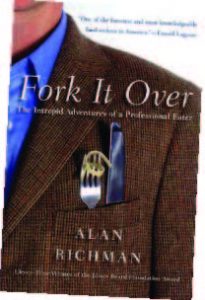 FOR FUTURE REFERENCE
FOR FUTURE REFERENCE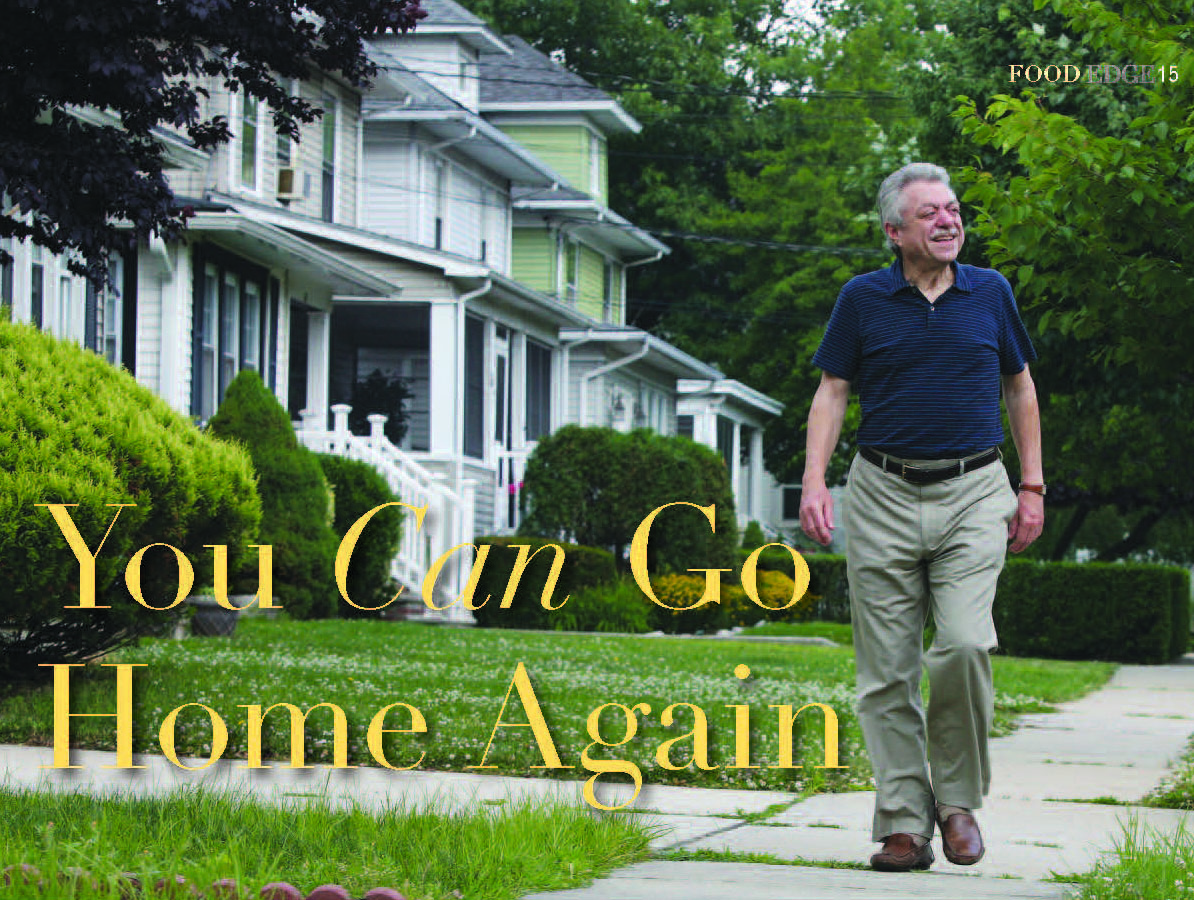
 Café Z • Stuffed Meatball
Café Z • Stuffed Meatball Chestnut Chateau • Pan-Seared Tilefish
Chestnut Chateau • Pan-Seared Tilefish George and Martha’s American Grille • Pork Osso Buco
George and Martha’s American Grille • Pork Osso Buco The Manor • Surf & Turf
The Manor • Surf & Turf Mario’s Tutto Bene • Vinegar Pork Chops
Mario’s Tutto Bene • Vinegar Pork Chops The Office Tavern Grill • Chicken & Waffles
The Office Tavern Grill • Chicken & Waffles The Office Beer Bar & Grill • The Wedge Burger
The Office Beer Bar & Grill • The Wedge Burger Piattino Neighborhood Bistro • Braised Chicken & Linguine
Piattino Neighborhood Bistro • Braised Chicken & Linguine Publick House • Blackened Scottish Salmon
Publick House • Blackened Scottish Salmon Rio Rodizio • Roasted Meats
Rio Rodizio • Roasted Meats Thai Amarin • Drunken Noodles
Thai Amarin • Drunken Noodles